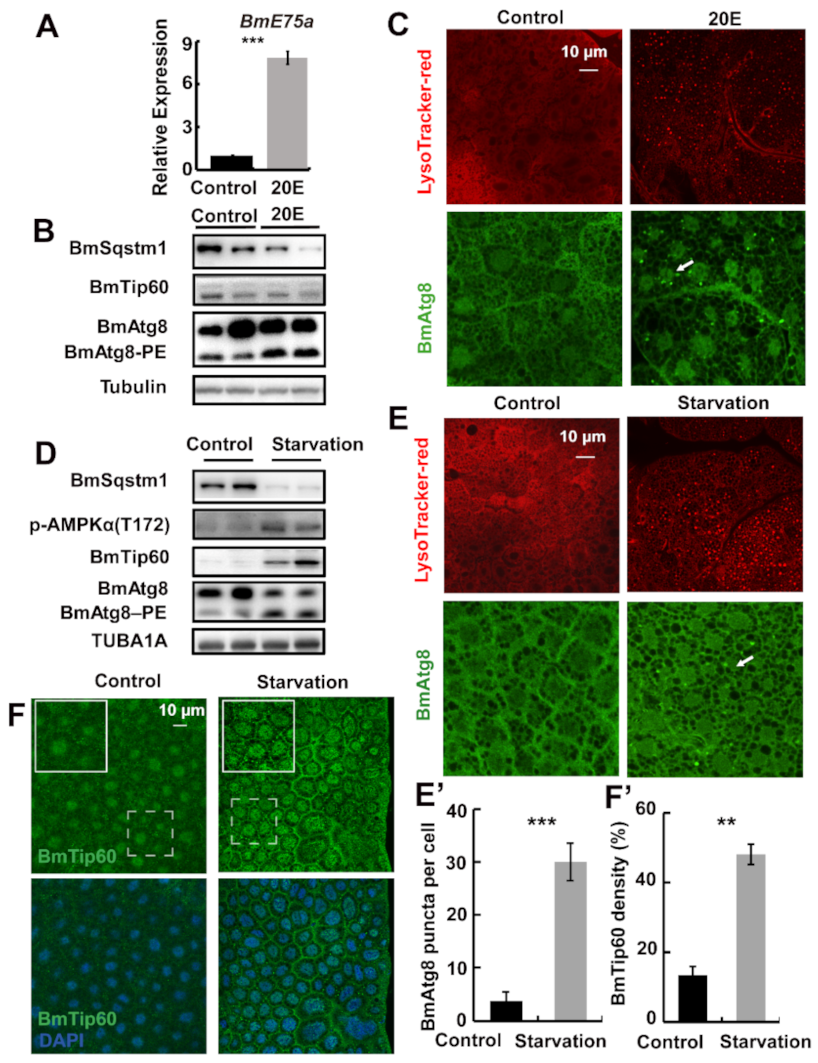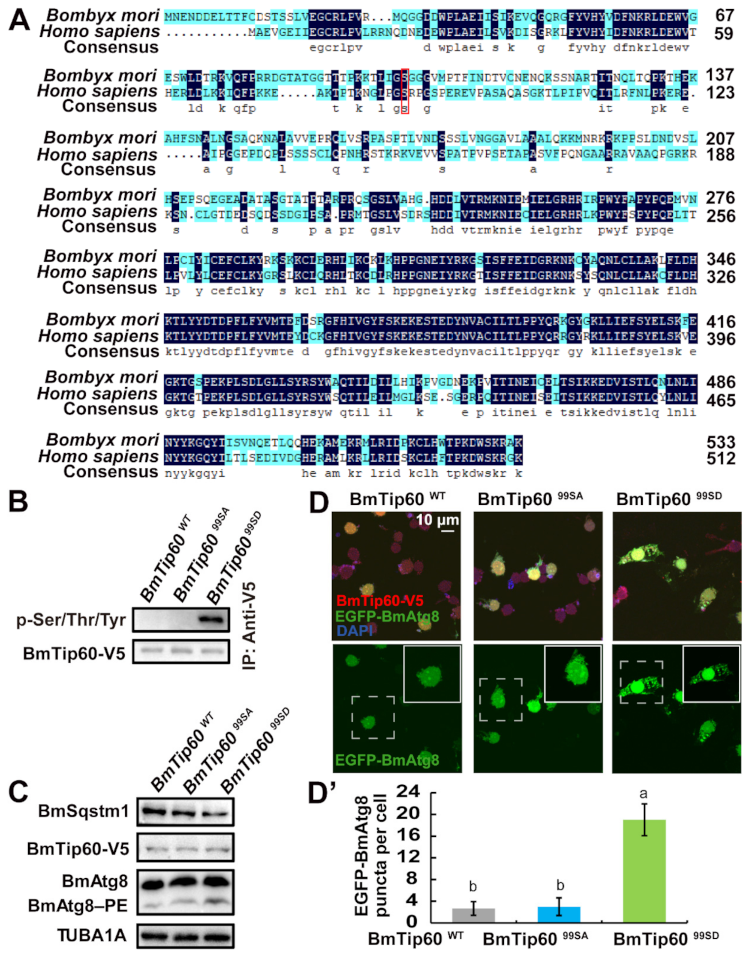Correction: Wu, W., et al. Tip60 Phosphorylation at Ser 99 Is Essential for Autophagy Induction in Bombyx mori. Int. J. Mol. Sci. 2020, 21, 6893
Conflicts of Interest
Reference
- Wu, W.; Li, K.; Zhao, H.; Xu, X.; Xu, J.; Luo, M.; Xiao, Y.; Tian, L. Tip60 Phosphorylation at Ser 99 Is Essential for Autophagy Induction in Bombyx mori. Int. J. Mol. Sci. 2020, 21, 6893. [Google Scholar] [CrossRef] [PubMed]


Publisher’s Note: MDPI stays neutral with regard to jurisdictional claims in published maps and institutional affiliations. |
© 2021 by the authors. Licensee MDPI, Basel, Switzerland. This article is an open access article distributed under the terms and conditions of the Creative Commons Attribution (CC BY) license (http://creativecommons.org/licenses/by/4.0/).
Share and Cite
Wu, W.; Li, K.; Zhao, H.; Xu, X.; Xu, J.; Luo, M.; Xiao, Y.; Tian, L. Correction: Wu, W., et al. Tip60 Phosphorylation at Ser 99 Is Essential for Autophagy Induction in Bombyx mori. Int. J. Mol. Sci. 2020, 21, 6893. Int. J. Mol. Sci. 2021, 22, 1751. https://doi.org/10.3390/ijms22041751
Wu W, Li K, Zhao H, Xu X, Xu J, Luo M, Xiao Y, Tian L. Correction: Wu, W., et al. Tip60 Phosphorylation at Ser 99 Is Essential for Autophagy Induction in Bombyx mori. Int. J. Mol. Sci. 2020, 21, 6893. International Journal of Molecular Sciences. 2021; 22(4):1751. https://doi.org/10.3390/ijms22041751
Chicago/Turabian StyleWu, Wenmei, Kang Li, Haigang Zhao, Xianying Xu, Jing Xu, Man Luo, Yang Xiao, and Ling Tian. 2021. "Correction: Wu, W., et al. Tip60 Phosphorylation at Ser 99 Is Essential for Autophagy Induction in Bombyx mori. Int. J. Mol. Sci. 2020, 21, 6893" International Journal of Molecular Sciences 22, no. 4: 1751. https://doi.org/10.3390/ijms22041751
APA StyleWu, W., Li, K., Zhao, H., Xu, X., Xu, J., Luo, M., Xiao, Y., & Tian, L. (2021). Correction: Wu, W., et al. Tip60 Phosphorylation at Ser 99 Is Essential for Autophagy Induction in Bombyx mori. Int. J. Mol. Sci. 2020, 21, 6893. International Journal of Molecular Sciences, 22(4), 1751. https://doi.org/10.3390/ijms22041751




